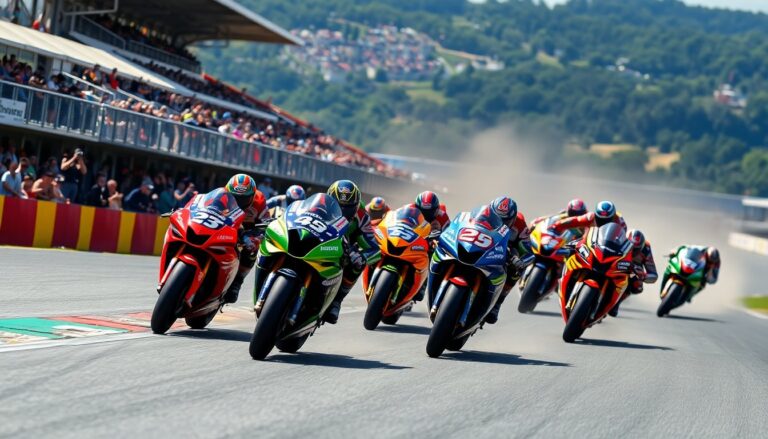Argomenti trattati
The MotoGP is more than just a race; it represents a thrilling combination of speed, technology, and rider skill. Originating in 1949, it has become the pinnacle of motorcycle racing. Each season, top riders and manufacturers compete globally, displaying their abilities in a series of exhilarating races. A deeper understanding of MotoGP enhances the appreciation of the sport, extending beyond the sheer adrenaline of the events.
The structure of MotoGP
MotoGP consists of multiple classes, with the premier class being MotoGP, followed by Moto2 and Moto3. Each class features distinct engine capacities and specifications, creating a layered competitive framework. Riders accumulate points throughout the season, and the individual with the highest score at the conclusion is declared the World Champion.
Classes of competition
The MotoGP class boasts motorcycles with a maximum engine capacity of 1,000cc. These machines are engineering marvels, often achieving speeds exceeding 350 km/h (217 mph). Conversely, Moto2 bikes are limited to 765cc engines, while Moto3 bikes have a maximum of 250cc. This tiered structure not only fosters a diverse range of competition but also serves as a launchpad for future MotoGP stars.
Technology and innovation
A compelling aspect of MotoGP is its relentless drive for technological advancement. Manufacturers such as Yamaha, Honda, Ducati, and Suzuki invest significantly in research and development to secure a competitive advantage. Innovations like traction control, anti-lock braking systems, and aerodynamic enhancements have reshaped racing strategies and bike performance.
Data analytics in racing
In recent years, data analytics has emerged as a vital component of MotoGP strategy. Teams gather extensive data during practice and qualifying sessions, scrutinizing metrics like tire wear, fuel consumption, and lap times. This analysis informs teams’ decisions about race strategies and bike configurations, providing a crucial edge on race day.
The art of racing strategy
While speed is essential, the art of racing strategy holds equal importance in MotoGP. Riders must focus not only on their pace but also on anticipating their competitors’ movements. Race tactics include slipstreaming behind other riders to conserve energy and planning overtakes at strategic points on the track. The ability to adapt to changing conditions, such as weather or track surface, is also critical to a rider’s success.
Physical and mental endurance
Competing in MotoGP requires exceptional physical and mental endurance. Riders engage in rigorous training to enhance strength, flexibility, and stamina. The physical demands of controlling a high-speed motorcycle necessitate significant core strength and balance. Furthermore, the mental aspect is crucial; riders must maintain focus and composure under pressure, making split-second decisions that can influence a race’s outcome.
The allure of MotoGP transcends the races themselves. It embodies a unique culture that draws millions of fans worldwide. From the roar of the engines to the camaraderie among spectators, MotoGP celebrates speed and skill. The thrill of witnessing world-class athletes push the limits of possibility on two wheels is an unparalleled experience.
As the sport evolves, it faces challenges such as sustainability and safety. The MotoGP organization is actively pursuing greener technologies and ensuring the safety of its riders. The future of MotoGP promises to be as captivating as its rich history, merging tradition with innovation in the quest for speed. This balance is what keeps fans engaged year after year.

